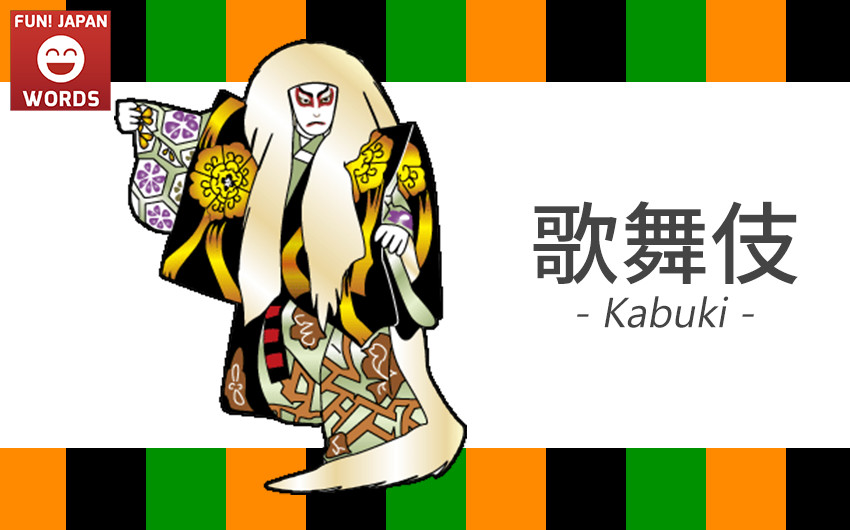
Kabuki (歌舞伎) is a classical Japanese dance-drama. It’s history dates back to the 17th century, around the time when the English Renaissance theatre (Shakespearean plays) began to flourish in the West. While it is was developed in a similar era, Kabuki is very different from the Western theater.
Kabuki Characteristics
Kabuki is known for its intricate costumes, make-up and the dramatic performances of the actors. Although Kabuki was originally performed by an all-female cast, during the Edo period, women were banned from performing, and even female roles were performed by men. Most Kabuki performances today also feature an only-male cast.Can Kabuki Be Performed in English?
Kabuki is among the most popular of the classical Japanese arts still embraced even today. Classical Japanese is used in Kabuki plays, and can be difficult to understand even for native Japanese speakers. Thankfully, some theaters provide English translations that you can listen to using headphones while watching the drama to help enhance the experience.Where can you see Kabuki?
If you are interested in traditional Japanese culture, be sure to visit one of the many Kabuki theaters readily found in many of Japan’s largest cities. The most popular theaters include the Kabukiza Theatre in Tokyo’s Ginza district, and Shochikuza Theatre in Osaka.Let’s remember the following useful sentences before going to Japan!
Explaining Kabuki using Japanese!
●Kabuki wa nagai rekishi ga arimasuyo.(歌舞伎は長い歴史がありますよ。)
> The history of Kabuki theater is very long.
●Kabuki de onna no yaku wo enjiru hito wa onnagata to iimasu.
(歌舞伎で女の役を演じる人は女形と言います。)
> People who act out female roles in Kabuki are called onnagata.
Now all that’s left is to go out there and try using them in Japan!
■■■ Back Number Articles ■■■
Check All Fun! Japan WORDS
Previous Word
Oshaberi (おしゃべり) Fun! Japan Words vol.137
Comments